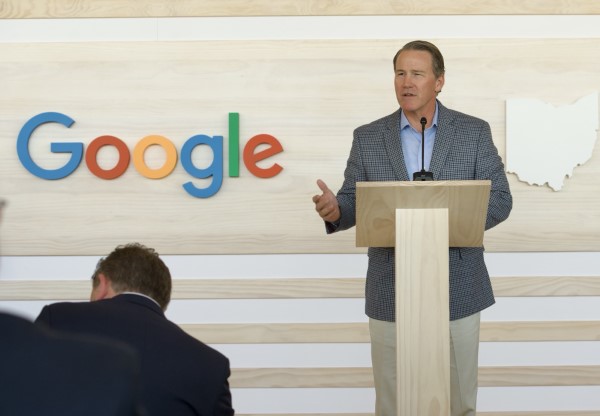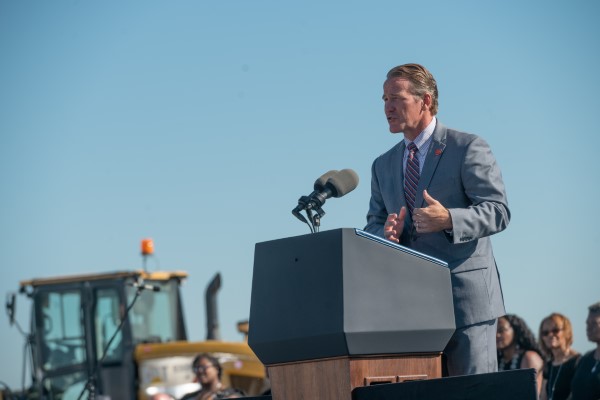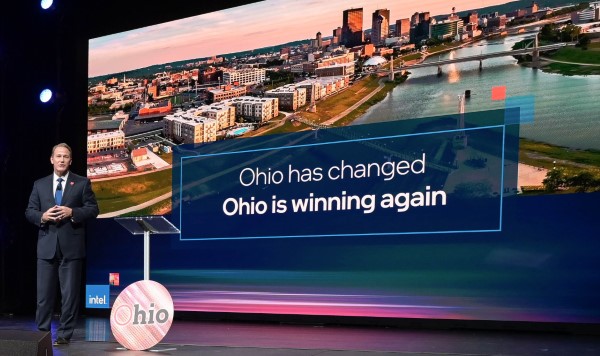Ohio Lieutenant Governor Jon Husted has made a career out of streamlining government. From digitizing business licensing to launching TechCred to help Ohioans gain valuable new job skills, Husted is an innovator and an entrepreneur when it comes to reimagining the way government agencies serve taxpayers.
An All-American defensive back when he played for the Dayton Flyers football team that won a national championship in 1989, Husted knows what it takes to compete and win in economic development too. Among his former jobs is a stint as vice president of economic development for the Dayton Area Chamber of Commerce.
We recently caught up with Husted and asked him about a variety of issues that benefit economic development.
It has been said that you reduced the cost for starting a business in Ohio by 21%, making Ohio the least expensive state in the Midwest to launch and operate a business. How did you achieve that cost reduction?
HUSTED: Mostly through automation. We took a paper process and turned it into a digital one that allowed us to turn a people process into a digital one. We were able to cut the business licensing fees by 21%. We now have lower rates than almost any state. For many business owners, this is their first interaction with the state government. We continue to try to build on that. We use technology to improve the way we serve our customers. Every year after we launched this new digital application, we saw record-setting filings for new businesses in the state of Ohio. The more friction you take out of the process, the more businesses will prosper. Think about how the process used to work. You would fill out a form and mail it in with a check. By turning this into an exclusively digital process, we turned a 4-day process into a 4-hour process. It led to a change of culture on how we do so many other things. We did this across all of the state government. Instead of having to show up in person in an office, you can now do everything remotely, digitally, and that alone has saved hundreds of thousands of hours and tens of millions of dollars in costs. That is creating some amazing results across the board. To get your driver’s license, you would have to go to the DMV. Nobody likes that. Now you don’t have to do that in Ohio anymore. We have moved that entirely to a digital process.
Part of your job is overseeing the state’s Common Sense Initiative (CSI). Can you describe that program and explain how it helps businesses?
HUSTED: Anytime a law is passed, there are new rules promulgated. CSI makes sure that we give businesses the ability to weigh in on whether those rules are anti-business. In 53% of the rules that agencies have written, we have amended those to find improvements. We have also gone through the entire administrative code with an AI tool to eliminate 2 million words from the regulatory code. We made it easier for people to comply. We are eliminating the unnecessary. We make sure that the rules we do write are not onerous to businesses. We have been doing this since 2019. This has produced very positive feedback. We believe that regulators ought to listen to the voices expressing concern at the front of the process. CSI is an advocate of business-friendly regulations. We have certainly changed the ways the regulators and the rule writers think about their jobs.
“We were able to cut the business licensing fees by 21%. We now have lower rates than almost any state.”
— Lt. Gov. Jon Husted
You also oversee the Governor’s Office of Workforce Transformation. What does this office do, and can you share any recent milestone achievements?
HUSTED: We coordinate with the business community to make sure all the money we are spending across the workforce platform is being spent thoughtfully and strategically to assure positive workforce outcomes. We have launched TechCred — a program where anyone in Ohio can get free job training for a tech credential — and there are thousands of job skills to choose from. You can pick the training provider. We pay up to $2,000 of the cost of earning that short-term credential. It is pay for completion. We don’t pay unless you earn the credential. We always get something for our investment. It has been very popular. Everybody wins. The employer wins a good employee. The employee gets more earning potential. This has been one of the most successful programs we have launched in this administration. This is one of the top-tier issues in our state. It makes sure that our high school system and career centers are aligned. We have more funding for them now. We have bought new equipment. We are helping 15,000 more students each year graduate from our career centers — from robotics to welding to medical techs. You can earn all those credits in high school. You can even land good jobs before you graduate.
 Lt. Gov. Jon Husted announces Google’s expansion in Ohio.
Lt. Gov. Jon Husted announces Google’s expansion in Ohio.
Photo courtesy of the Office of the Lieutenant Governor of Ohio
Where does Ohio stand in the ongoing effort to deliver broadband connectivity to every Ohioan?
HUSTED: It is our priority to include everyone in the modern economy. To live in our world today, you must be connected to high-speed internet. We had, at the start of the initiative, about a million people who did not have access. We are aggressively connecting people to access. We are using our workforce initiatives to train people to be tower techs and broadband installers. We are making great progress, including telehealth services in our schools and more health care options for the elderly. They may have limited mobility. All those things are being benefited by investments of state and federal dollars.
“It is our priority to include everyone in the modern economy. To live in our world today, you must be connected to high-speed internet.”
— Lt. Gov. Jon Husted
What are the top priorities of Innovate Ohio this year?
HUSTED: It is designed to make Ohio the most innovative and entrepreneurial state in the Midwest. We worked on the Ohio IP Promise early on. Colleges and universities made it difficult to take technology launched on campus to be commercialized. IP Promise makes it simple and easy to facilitate commercialization of technology off of the college campus and into the private sector. That is an example of how we are trying to use Innovate Ohio to improve the way we do business in state government. We are also working with schools to create an AI toolkit to help educators learn how to find trusted resources and begin to incorporate AI in the classroom. We want to make sure teachers have access to these tools.
Recently, you wrote about the need to increase access to affordable child care for working families. What is Ohio doing in this regard, and do you propose any additional measures to help workers who have young children?
HUSTED: Ohio uses its state and federal dollars to support working families. Child care can cost $20,000 a year. That does not work for working families. We have to figure out ways to provide more access to affordable child care. We are also trying to encourage more employer-based child care. I have been to many businesses that are putting child-care facilities on their campuses. That has been a real win for them because employees know their children are just a few steps away. That makes people want to come work for a company. We are tackling this in a variety of ways. We are working to help working families have child care.
This administration has made it a priority to attract more military veterans into the workforce of Ohio. What is the state doing to facilitate that, and do you have any results you can share?
HUSTED: We aspire to be the most military-friendly state in the country. We have 35,000 active military members on base at Wright-Patterson Air Force Base in Dayton. We have a very large veteran population. Veterans are very good people to have work for you because of their work ethic and character. That is part of our strategy.
 Lt. Gov. Jon Husted addresses the crowd at Intel’s groundbreaking ceremony.
Lt. Gov. Jon Husted addresses the crowd at Intel’s groundbreaking ceremony.
Photo courtesy of the Office of the Lieutenant Governor of Ohio
How did Ohio win the landmark Intel chip plant project? What ultimately set Ohio apart from the competition?
HUSTED: First of all, we are in a really good state to do business. We have good Midwestern values of hard work, patriotism and a proud manufacturing heritage. If you were looking to build a chip plant east of the Mississippi, I can’t think of a better place than Ohio. We have wonderful infrastructure and great universities and colleges. We were in an incredibly competitive environment, but we did not have Ohio communities fighting over it. When Intel asked a question, we gave them an honest yes or a quick no. They could count on Ohio to deliver what we promised. We have exceeded their expectations on that front. We have worked very diligently to serve them.
What is the one thing about Ohio that most people in other states don’t know?
HUSTED: We make the things that people need to live and thrive. We are the “Heart of It All” — from the food you eat to the cars that drive and the chips that power our devices. Intel has labeled us the Silicon Heartland. That is who we are, and we are proud of who we are.

